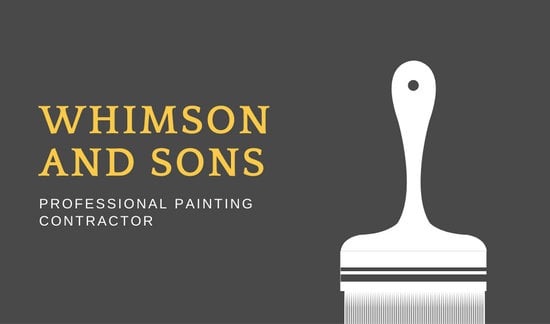Understand Just How Seasonal Problems Impact The Success Of Commercial Outside Paint And Learn The Excellent Periods To Guarantee Durable End Results For Your Project
Understand Just How Seasonal Problems Impact The Success Of Commercial Outside Paint And Learn The Excellent Periods To Guarantee Durable End Results For Your Project
Blog Article
straightline Produced By-Aguilar Skafte
When you're intending an industrial external paint project, seasonal factors can make or break your outcomes. You'll want to take into consideration exactly how temperature level and moisture influence paint application and drying times. Selecting the appropriate period can guarantee your paint sticks appropriately and lasts longer. Yet which seasons are really the most effective for this type of job? Let's discover the crucial elements that can influence your task's success.
The Effect of Temperature Level on Paint Application
When you're planning a commercial exterior paint project, the temperature level can considerably influence how well the paint sticks and dries out.
Preferably, you want to repaint when temperatures range in between 50 ° F and 85 ° F. If it's too cool, the paint might not heal correctly, causing issues like peeling off or splitting.
On the flip side, if it's also warm, the paint can dry as well promptly, preventing proper bond and leading to an irregular coating.
please click the next web page need to also take into consideration the moment of day; early morning or late afternoon uses cooler temperature levels, which can be extra positive.
Constantly examine the producer's recommendations for the specific paint you're making use of, as they frequently supply support on the perfect temperature level array for optimal results.
Moisture and Its Effect on Drying Times
Temperature isn't the only ecological aspect that influences your industrial outside painting task; humidity plays a considerable role also. High humidity degrees can slow down drying out times substantially, affecting the general high quality of your paint task.
When the air is filled with wetness, the paint takes longer to cure, which can cause concerns like inadequate attachment and a greater risk of mold growth. If you're painting on a particularly moist day, be gotten ready for extensive wait times in between layers.
It's critical to keep an eye on local climate condition and plan as necessary. Ideally, go for moisture levels in between 40% and 70% for optimum drying out.
Keeping these factors in mind guarantees your job remains on track and supplies a long lasting finish.
Best Seasons for Commercial Outside Paint Projects
What's the most effective season for your business exterior painting jobs?
Spring and early autumn are usually your best choices. During these periods, temperatures are light, and moisture degrees are usually lower, creating suitable conditions for paint application and drying.
Prevent summer's intense heat, which can trigger paint to dry also swiftly, resulting in inadequate attachment and surface. Similarly, winter season's chilly temperatures can hinder appropriate drying and healing, risking the longevity of your paint task.
Go for days with temperatures in between 50 ° F and 85 ° F for ideal results. Keep in mind to check the local weather forecast for rainfall, as wet conditions can ruin your project.
Planning around these factors ensures your painting job runs efficiently and lasts longer.
Final thought
Finally, preparing your commercial exterior painting projects around seasonal factors to consider can make a significant difference in the outcome. By organizing job throughout the excellent temperatures and moisture degrees, you'll ensure far better bond and drying times. Bear in mind to watch on neighborhood weather report and select the right time of year-- spring and very early fall are your best choices. Taking https://www.forbes.com/home-improvement/painting/cost-to-paint-a-room/ will help you accomplish a resilient and professional finish that lasts.
